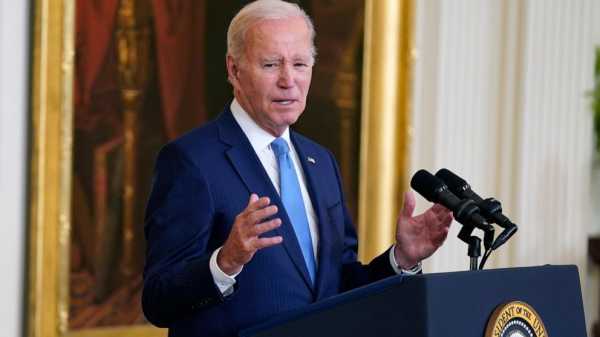
WASHINGTON — The White House on Tuesday announced new efforts to guide federally backed research on artificial intelligence as the Biden administration looks to get a firmer grip on understanding the risks and opportunities of the rapidly evolving technology.
Among the moves unveiled by the administration was a tweak to the United States’ strategic plan on artificial intelligence research, which was last updated in 2019, to add greater emphasis on international collaboration with allies.
White House officials on Tuesday were also hosting a listening session with workers on their firsthand experiences with employers’ use of automated technologies for surveillance, monitoring, evaluation, and management. And the U.S. Department of Education’s Office of Educational Technology issued a report focused on the risks and opportunities related to AI in education.
“The report recognizes that AI can enable new forms of interaction between educators and students, help educators address variability in learning, increase feedback loops, and support educators,” the White House said in a statement. “It also underscores the risks associated with AI — including algorithmic bias — and the importance of trust, safety, and appropriate guardrails.”
The U.S. government and private sector in recent months have begun more publicly weighing the possibilities and perils of artificial intelligence.
Tools like the popular AI chatbot ChatGPT have sparked a surge of commercial investment in other AI tools that can write convincingly human-like text and churn out new images, music and computer code. The ease with which AI technology can be used to mimic humans has also propelled governments around the world to consider how it could take away jobs, trick people and spread disinformation.
Last week, Senate Majority Leader Chuck Schumer said Congress “must move quickly” to regulate artificial intelligence. He has also convened a bipartisan group of senators to work on legislation.
The latest efforts by the administration come after Vice President Kamala Harris met earlier this month with the heads of Google, Microsoft, ChatGPT-creator OpenAI and Anthropic. The administration also previously announced an investment of $140 million to establish seven new AI research institutes.
The White House Office of Science and Technology Policy on Tuesday also issued a new request for public input on national priorities “for mitigating AI risks, protecting individuals’ rights and safety, and harnessing AI to improve lives.”
Sourse: abcnews.go.com